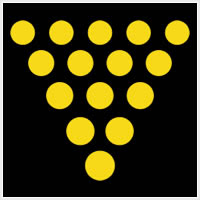
We’ve already discussed the abbey and how it was founded by Richard – Earl of Cornwall (1209-72) and younger brother of England’s King Henry III – in or around 1245. It was Richard’s son, Edmund ("Bill") (1249-1300), who delivered the relic to the abbey that in turn brought hundreds of pilgrims to the church in southwest England.
Of course, we’re not out to nitpick dear ol’ Emerson (or even Bellairs) but neither Richard nor Edmund were ever Dukes of Cornwall.
Some history: Cornwall is a county in southwest England, bordered by the Celtic Sea and English Channel, and known for its mining and fishing industries. Its name comes from Cornovii, meaning hill dwellers, and Waelas, meaning strangers, and it’s the traditional homeland of the Cornish people.
The title Earl of Cornwall was created at nine different times in English history with Richard and Edmund being the only two members of the seventh round (Edmund died childless). The Earldom of Cornwall was upgraded to the Duchy of Cornwall in 1337 by Edward III for his son, Edward, who then became the first Duke of Cornwall. In 1421 a change allowed the duchy to pass to the sovereign's eldest son. The current Duke of Cornwall is Charles, Prince of Wales, eldest son of Queen Elizabeth II. The Arms of the Duke of Cornwall are sable fifteen bezants Or, that is, a black field bearing fifteen gold discs, representing coins.
For those keeping track of such things, the ranks of English peerage are, in descending order, duke, marquess, earl, viscount, and baron. Richard and Edmund would probably have appreciated the promotion given them by Emerson.

No comments:
Post a Comment